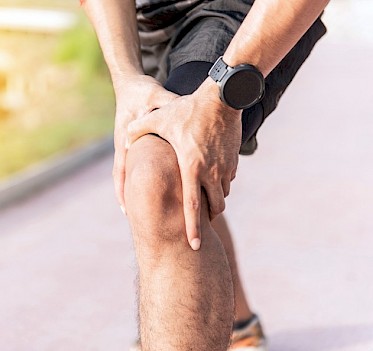ACL Tears VS ACL Sprains
One of the most common injuries we see here at HealthCARE Express Physical and Occupational Therapy, at least as far as athletes are concerned, is an injured anterior cruciate ligament (ACL). The ACL helps connect the femur and tibia bones together to provide stabilization to your knee. Damaging it can cause severe pain or can even prevent someone from walking due to their knee giving out under their weight.
ACL tears are seen most commonly in athletes but can occur during any type of physical activity. Twisting your knee while running, landing and jumping in a way that twists your knee, and having your knee hit from the side can all cause a tear to form in the ACL. After the injury, the knee normally swells and makes the leg unstable.
A torn ACL may require surgery in severe cases, depending on the person’s age, lifestyle, activity, occupation, and how unstable their knee is.
You can sprain your knee similarly to how you can tear your ACL. Unlike in a tear, a sprained ACL is only mildly damaged instead of torn. With a sprain, the joint is normally just sore, but it is still stable. Those who have sprained their ACL will suffer many of the same symptoms as those who have torn the ligament.
To help alleviate the pain of both injuries, try the R.I.C.E. method!
Rest: Don’t keep walking on your injured knee. This just puts more stress on the torn or strained ligaments which will keep them from healing properly.
Ice: A common misconception about treating sprains is that you should put heat on it. People sit down and put a heating pad or a warm wet towel on their injury, but that is definitely a no-go. Swelling is caused by bleeding in the tissue under the skin, and heat will only draw more blood to the area and cause more swelling. For injuries such as strains and sprains, you should apply ice to help ease the swelling and pain.
Compression: Compression can help reduce swelling. A proper compression can keep the ligaments in the correct place, so they heal correctly. Don’t wrap your injury up too tightly, though, as that can also cause injury.
Elevation: Try to keep your injury elevated above the level of your heart when lying down. Gravity helps to keep too much blood from going to your injury and causing more swelling.
Combine all four of these components for your knee to recover faster!
Most athletes will require physical therapy after they injure their ACL or after they have undergone surgery to repair it. If you need help recovering from an ACL tear or sprain, get your doctor to refer you to us here at HealthCARE Express Physical and Occupational Therapy!
